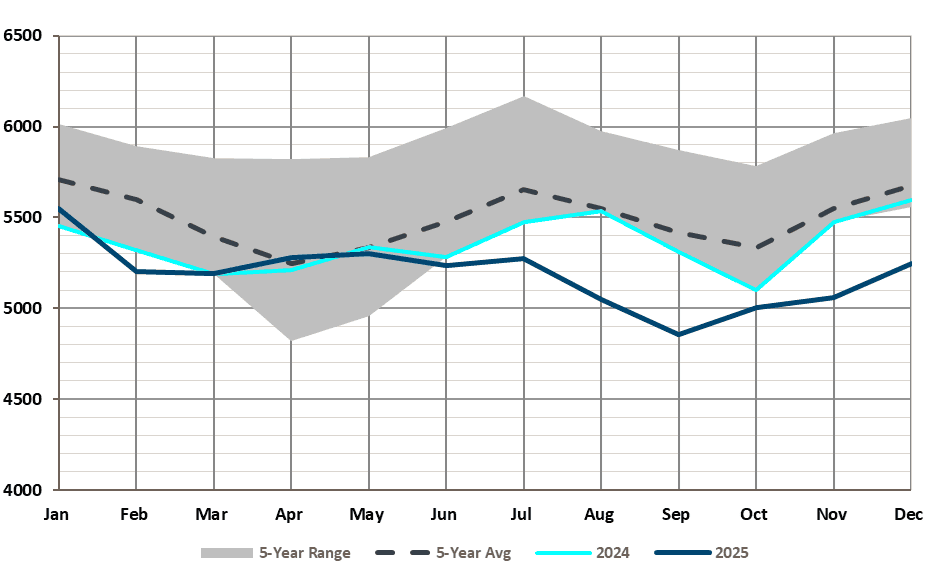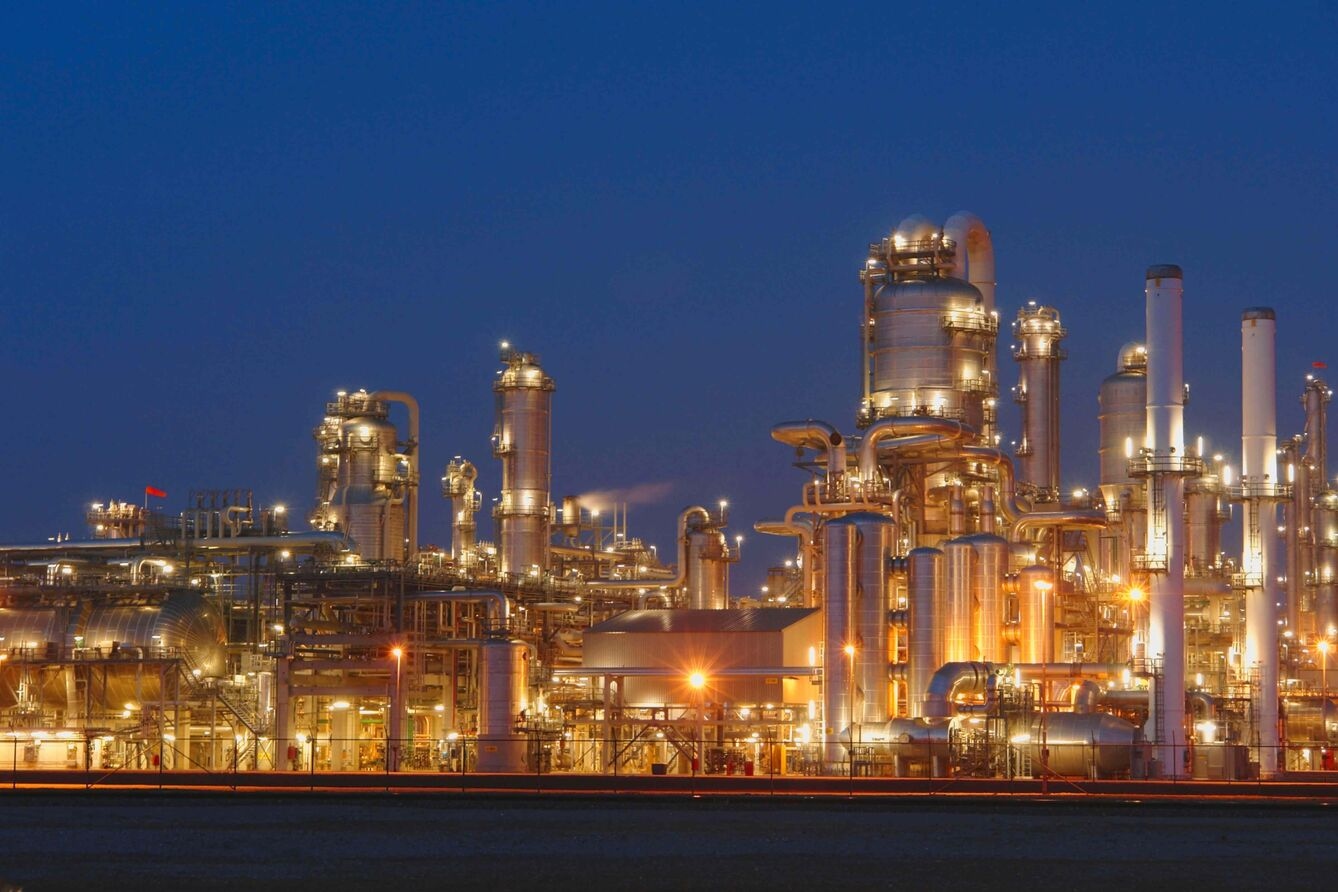Repeated drone attacks keep Russian refinery runs in check
Ongoing repair efforts at multiple Russian refineries continue to be disrupted by repeated drone attacks, further crippling operations and delaying output recovery. As a result, Russia’s crude processing has fallen near ~ 5 mb/d, tightening diesel and gasoline supply and adding downside risk to early-2026 output.
Ukrainian drone attacks on Russian refineries have intensified once again, significantly undermining the country’s refining output and product export capacity. The renewed wave, which began in August-25, has escalated through November, striking key refineries multiple times and causing prolonged outages. These repeated hits have extended repair timelines and further constrained crude throughput.
The intensified attacks in August alone drove Russian refinery runs to a multi-year low of around 4.9-5 mbd in September — a decline of ~ 500 kbd from pre-attack levels. While a partial and gradual recovery was initially expected toward the end of Q4 as damaged facilities were expected to come online, the persistence of drone strikes on the same sites has added further downward pressure on Russia’s refinery runs.
In November, the 240 kbd Tuapse refinery, the 300 kbd Volgograd refinery and 150 kbd Saratov Refinery, together accounting for ~ 9% of Russia’s total refining capacity, were reportedly targeted again. Although not all units are offline, the repeated disruptions have probably caused a decline in overall refinery runs. Repairs at these sites are expected to take several weeks. However, with repeated strikes on the same facilities, there is growing uncertainty over whether plants can safely resume operations even after repair works are completed, further clouding the outlook for crude throughput.
As a result of these fresh and repeated attacks, we now expect November crude runs to decline by ~130–150 kbd vs our previous expectations to average just over 5 mbd with further downside risk on the cards. This translates into an estimated gas oil production loss of ~35–55 kbd and a gasoline output reduction of ~ 22–30 kbd. With key primary units offline, some DPP barrels appear to be redirected into secondary processing units, particularly hydrocrackers at affected sites, to sustain clean product production. This strategy could be contributing to a steeper decline in DPP exports relative to clean product exports, as refiners prioritize internal processing over external sales amid tightening domestic product balances. The continued vulnerability of Russia’s refining infrastructure presents a significant downside risk to crude processing heading into early next year. Should repairs at Tuapse, Volgograd, and other refineries be further delayed, total refinery throughput may remain capped near ~5.0–5.1 mbd, well below the ~5.3–5.4 mbd average seen earlier in the year. Extended outages would further tighten global middle-distillate balances, particularly as winter demand strengthens across Europe and Asia.
Russia refinery runs, kbd

Want market insights you can actually trust?
Kpler delivers unbiased, expert-driven intelligence that helps you stay ahead of supply, demand, and market shifts. Our precise forecasting empowers smarter trading and risk management decisions.
Unbiased. Data-driven. Essential. Request access to Kpler today.

Uncover risks before regulators do
See Kpler's Risk & Compliance insights in action.




